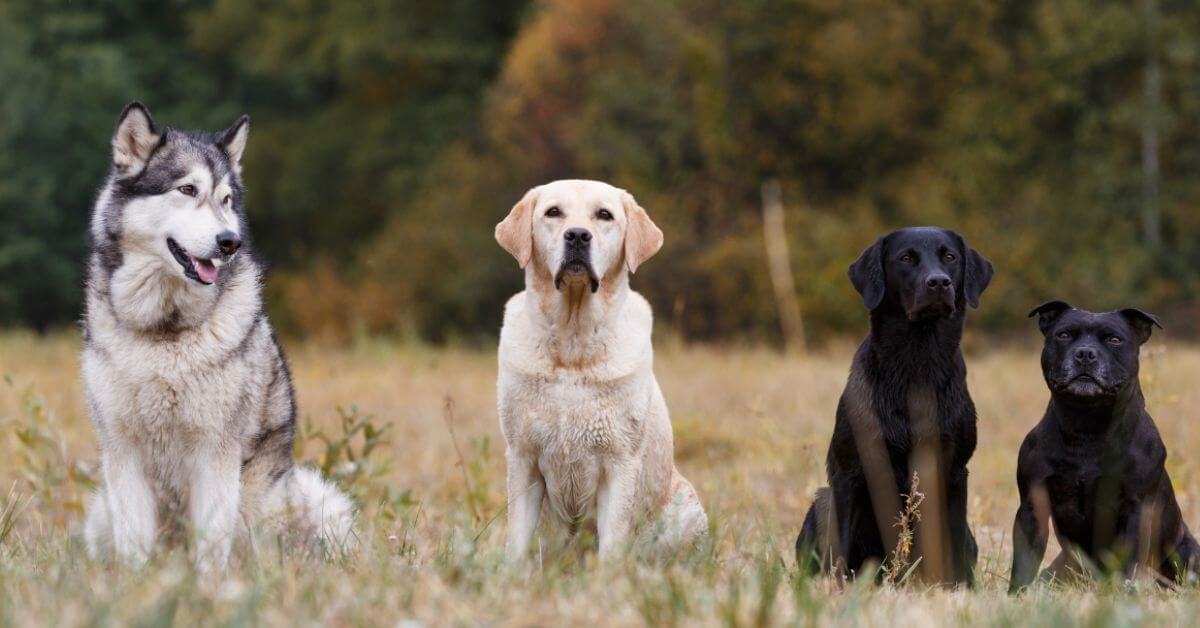Bad breeding can hurt dogs and make them sick or unhappy. It can also make it hard for them to be good pets, which might lead to them being given away or dying too soon. Everyone involved, like breeders, vets, and dog owners, should work together to make sure dogs live good lives.
All dogs, no matter how they’re bred, deserve a good life. Breeders should always care for their dogs and puppies. There are rules in place to help make sure dogs are treated well. If a country has even stricter rules, those should be followed.
We’re always learning more about how to take care of dogs and keep them healthy. So, breeders and those in charge need to stay updated on the best ways to care for dogs.
When we talk about a dog’s well-being, it means how they feel inside. If a dog is sick, hurt, or bored, they’re not happy. But when they’re healthy, safe, and can do things they enjoy, they’re living a good life. We should always aim to give dogs a life where they are happy and thriving.
Breeders should take good care of all dogs and make sure puppies start life healthy and friendly. They should help puppies grow up happy and find them loving homes. Breeders should also make sure new owners know how to care for their dogs for their whole lives.
Understanding the Reasons for Breeding
If you’ve ever searched for a “labrador retriever breeder near me,” you’ll know that behind every dedicated breeder is a deep love for dogs, perhaps much like your own. These breeders aren’t just about producing puppies; they’re committed to:
- Improving breed standards:They want the best for Labradors and work hard to ensure they’re the best representation of the breed.
- Meeting demand for specific breeds: Recognizing the growing love for certain breeds, they strive to meet this demand so fellow dog lovers like you can find your perfect companion.
- Preserving certain genetic traits: By focusing on genetics, breeders ensure the unique and cherished characteristics of Labradors continue to shine through in every litter.
Choosing the Right Pair
For breeders, and for dog lovers like you, it’s all about creating the best possible match to ensure happy, healthy puppies.
-
Evaluating health and genetic compatibility:
Ethical breeders prioritize the health of the breeding dogs and their offspring. They conduct necessary health screenings to ensure that common breed-specific health issues are identified and addressed.
-
Importance of breed standards:
Breed standards serve as a guideline for how a breed should look, behave, and other specific traits they should exhibit. Adhering to these standards ensures the purity and consistency of the breed. When breeders prioritize breed standards, they contribute to preserving the unique characteristics and qualities that make each breed special.
-
Considering the temperament and behavior:
This point emphasizes the need to select breeding pairs based on their behavior and personality. Dogs with aggressive or overly shy temperaments can pass these traits onto their puppies. It’s essential to breed dogs with stable, friendly temperaments to ensure the puppies are well-adjusted, safe, and make for pleasant companions in homes.

Fundamental Genetics in Dog Breeding
-
Basics of canine genetics:
Just like understanding our family’s medical history can give us insights into our health, getting the grip on canine genetics helps breeders make informed decisions about which dogs to pair together.
-
Common genetic disorders and how to avoid them:
Certain breeds, maybe even your favorite one, are more prone to specific health issues. Knowledge of these issues ensures that breeders can steer clear of producing puppies with these disorders.
-
The role of DNA testing in modern breeding:
Thanks to advancements in science, DNA testing has become a game-changer. Now, every dedicated Labrador retriever breeder, perhaps the one right around your corner, can use it to make sure the puppies are as healthy as possible.
For dog lovers like you and me, this isn’t just about the technicalities of breeding. It’s about ensuring our furry friends have the best possible start in life.
The Breeding Process
-
Mating: natural vs. assisted:
Think of it as letting nature take its course versus giving it a little nudge. Some breeders let dogs mate naturally, while others might need to step in, based on what’s best for the dogs involved.
-
Pregnancy and its stages:
Just like expecting human parents eagerly chart out the stages of a baby’s growth, tracking a dog’s pregnancy is vital. It’s all about ensuring that mother and puppies are healthy and ready for the big day.
Post-mating Care
-
Caring for a pregnant dog:
nutrition, exercise, and vet visits: Just as an expecting mother needs the right food, a bit of stretching, and regular doctor’s appointments, a pregnant dog needs proper nutrition, some gentle exercise, and visits to the vet to ensure she’s at her best.
-
Recognizing potential complications:
Like any journey, there might be bumps along the way. Knowing the signs of potential problems ensures that any issues are caught early and addressed, ensuring the safety of both the mother and her future puppies.
The Birthing Process
-
Preparing for the birth:
creating a safe space: Much like setting up a nursery, it’s vital to provide a comfortable and quiet area for a dog to give birth. This ensures she feels secure and can focus on the delivery.
-
Stages of labor and delivery:
Just as with human births, understanding the progression of labor can be both fascinating and crucial. It allows us to know when things are going smoothly and when they aren’t.
-
Possible complications and when to seek veterinary assistance:
Like any birthing process, things don’t always go as planned. Recognizing signs of distress and knowing when to call in the experts is vital to ensure the safety of both the mother and her puppies.
Puppy Care and Socialization
-
Initial care:
feeding, warmth, and health checks: Like the care and attention a newborn baby needs, puppies require constant attention. They need to be fed, kept warm, and regularly checked to ensure they’re healthy and thriving.
-
Importance of early socialization:
Imagine the first time you introduced your child to a playground. Similarly, early interactions for puppies with other dogs, humans, and their environment set the foundation for them to grow into well-mannered and sociable pets.
-
Vaccination and deworming schedules:
Just as children need their initial rounds of vaccines to protect them from illnesses, puppies also need a schedule of vaccinations and deworming treatments to ensure they start their lives healthy and stay that way.
Ethical Considerations in Dog Breeding
-
Recognizing and preventing overbreeding:
Think of it as quality over quantity. Overbreeding can lead to health issues and an overwhelming number of puppies. It’s like overcrowding a class and expecting each student to get personal attention.
-
The role of spaying and neutering:
Just as we make responsible choices for our own health, controlling the population of dogs ensures fewer stray or unwanted pups suffer. Spaying and neutering play a pivotal role in this.
-
Importance of rehoming responsibly and ensuring the well-being of the puppies:
Imagine entrusting a dear friend to someone else’s care. Every puppy breeder feels that weight, making sure each furball finds a home that cherishes and nurtures them.
Conclusion
Have you ever embarked on a journey, knowing both its joys and challenges? Breeding dogs is quite like that – a blend of fulfilling moments and tough decisions. It’s not just about bringing adorable puppies into the world; it’s about making a positive difference:
-
The rewards and challenges of dog breeding:
It’s like nurturing a garden. There’s the beauty of watching life bloom, coupled with the meticulous care and hurdles that come with it. Every pup is a testimony to a breeder’s dedication and hard work.
-
Emphasizing responsible and ethical breeding practices:
Consider it a pledge, like a craftsman honing their art with integrity. It’s about ensuring that every puppy born is healthy, loved, and set up for a good lif.




